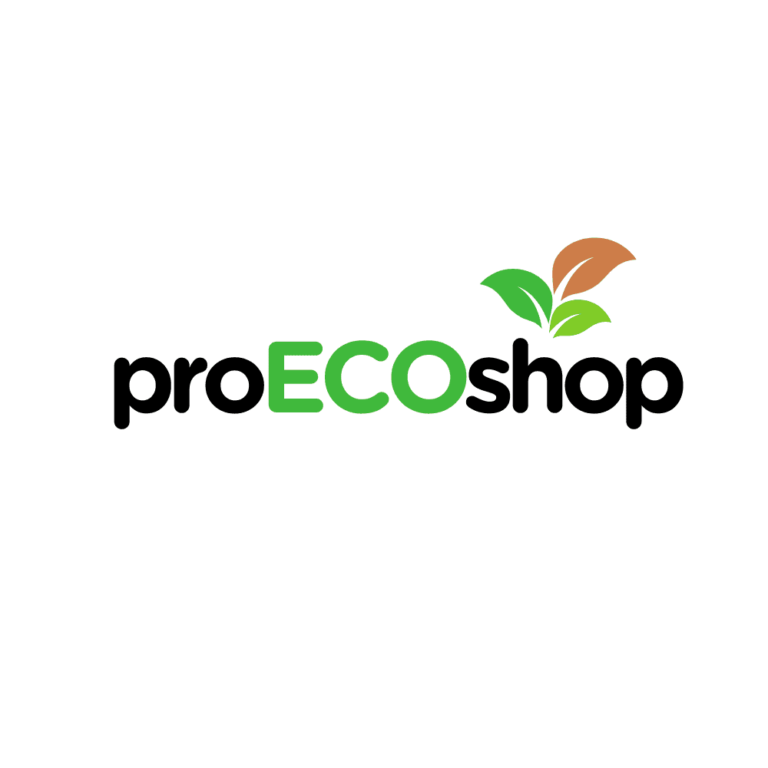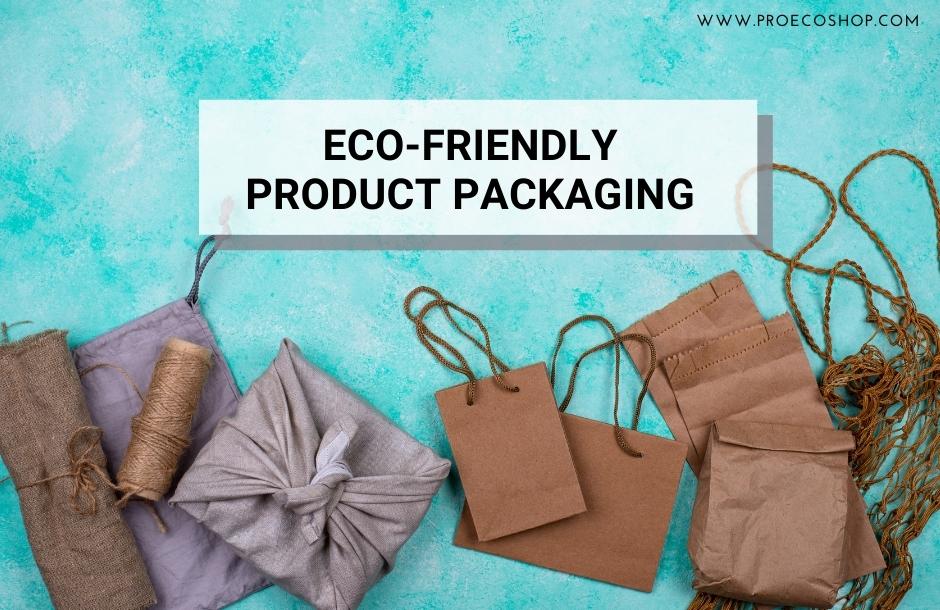Sustainable Product Packaging Ideas
The world is on the brink of a possible environmental catastrophe now. A lot of factors are behind this, but the lack of eco-friendly products is surely one of them.
Now, it’s not possible to change the whole scenario all on your own, but you can start off by using environmentally friendly packaging materials while doing custom packaging. In order to do so, you need to know the types of eco-friendly product packaging first.
Be it biodegradable packing peanuts or recycled paper, there are tons of different eco-friendly packaging solutions that can actively help you save the environment. Time for you to have a brief look at the most common types of product packaging!
What Is Eco-Friendly Sustainable Packaging?
To put things into a simpler perspective, sustainable packaging is basically using earth-friendly packaging material that won’t harm natural resources. It can be recycled packaging; it can be mushroom packaging – anything that doesn’t harm the environment falls under the category of eco-friendly sustainable packaging.
According to the SPC (Sustainable Packaging Coalition), there are a few criteria that make a packaging ‘sustainable.’
One of the prerequisites of sustainable packaging is that the compostable packaging materials have to be healthy and safe for individuals throughout their lifecycle.
Another important criterion is that the manufacturing processes of these materials have to be by using renewable energy. Also, eco-friendly packaging means it has to be reusable packaging.
Moreover, sustainable packaging materials should be manufactured through sustainable practices, and the usage of recycled plastics is not allowed. In short, you’ll have to do a life cycle assessment of any packaging material before it’s used in the packaging industry.
How Does Eco-Friendly Packaging Help the Environment?
Let’s be honest – plastic packaging shouldn’t even be on the list of packaging solutions now, mostly because the waste treatment of plastic in the world is simply terrible.
From the beginning of plastic production to using them as packaging materials – the whole process is very harmful to our environment. The solution? Environmentally friendly packaging.
Switching to biodegradable packaging seems like the smartest decision to make in these torrid times. To minimize carbon footprint, it is absolutely essential to reduce packaging waste like plastic and go for the eco-friendly packaging alternative.
As a matter of fact, eco-packaging can be of help here, as it refers to sustainable materials and omits plastic bags and similar items.
Using compostable materials is indeed one of the most sustainable packaging solutions, and it can actually help the environment by reducing the usage of plastic – something that has been harming it for a long while.
The usage of eco-friendly materials will lead to recyclable packaging – something that will gradually help us get rid of plastic. Using biodegradable materials still remains a key packaging solution to minimize plastic pollution and save the environment!
7 Different Types of Eco-Friendly Product Packaging
Now that you want to go green, there are amazing packaging options you can try. Starting with a basic corrugated wrap to biodegradable pellets, the world of environmentally friendly packaging is huge!
They eliminate packing waste, save nature, and give your business a good look overall. Let’s talk about 7 eco-friendly packaging materials so you can kiss the plastic bubble wrap goodbye!
- Biodegradable Packaging Peanuts
This packaging material is biodegradable, non-toxic, and affordable at the same time. Unlike polystyrene, also known as Styrofoam, these eco-friendly pellets don’t make their way to landfills or the ocean.
When made of corn starch or wheat, this packaging decomposes like any other organic substance. They also completely dissolve in water.
You can use it to fill up space inside a box with fragile products and trash them in the compost pile. It’s a good substitute for plastic packaging. However, biodegradable packing peanuts run heavier than their plastic counterparts. So, there might be a higher shipping cost.
2. Corrugated Bubble Wrap
If you want to try green packaging, corrugated cardboard is a good place to start. It has a biodegradable formula and can be easily recycled. Like compostable packing peanuts, a corrugated wrap can reduce your carbon footprint without compromising functionality.
This is one of the best cushioning materials for environmentally-conscious businesses. If you have to wrap a dainty product, cardboard packaging is much better than plastic.
Corrugated bubble wraps are made out of recycled cardboard collected from post-consumer waste. They can be pretty lightweight, depending on the density and layering.
3. Cornstarch Packaging
This is a great alternative to plastic lunch boxes and can save tons of plastic waste every year. As you can already tell, it’s made of cornstarch and is even edible for humans and pets.
If you dispose of corn-based packaging in the right way, it breaks down to CO2 within a few months. They come in opaque and transparent styles.
Green packaging is very cost-effective and can be utilized by food trucks, hotdog stands, and especially takeaway restaurants.
4. Clamshell Packaging
In a world where plastic clamshells are a dime a dozen, green packaging usually takes some getting used to. But what if we told you there’s an environmentally-friendly material that costs about the same and serves the same purpose?
That’s right, biodegradable clamshell packaging is the number one choice for food businesses and bakeries. They are used for storing hot and cold food. Sometimes storing hot food for long hours causes compostable packaging to perspire. Other than that, these packages are oven-safe and freezable.
100% biodegradable and disposable clamshells don’t have any wax lining, and they’re often made of food-safe sugarcane fiber. The best quality clamshell packaging is made out of recyclable materials – natural bagasse or sugarcane pulp.
5. Honeycomb Paper
If you want something like corrugated bubble wrap but with more cushioning, honeycomb paper is the way to go. Honeycomb has more strength and a relatively lower weight per cubic meter. Therefore, paper packaging brings down your shipping cost when compared to heavy foam pellets.
Honeycomb paper is driving styrofoam and bubble wrap out of business, and it’s all for the right reasons. First, honeycomb is very durable. It absorbs any bump during the shipping process, so the customer gets the product in one piece.
The structure of honeycomb paper has the ability to stretch and expand. It can cushion glass, ceramic, and super fragile products provided that you use several layers of honeycomb.
One question we always get is— Is honeycomb better than bubble wrap? We think there’s a slight trade-off between the quality of cushioning and the eco-friendliness. Bubblewrap, when wrapped accurately, may offer more protection than honeycomb paper.
6. Recycled Packaging Materials
Custom-made shipping boxes are always in demand. When made out of recycled material, they can show your climate-friendly values. So, if you want to be a green business going forward, consider using recycled boxes.
It’s possible to produce 100% recycled cardboard boxes, where the majority of the raw materials come from post-consumer waste. Businesses ship products inside these biodegradable containers and fill up the inner space with disposable peanuts.
Recycled containers are compostable, non-toxic, and can be made for any packaging needs. As for filler materials, you can use corrugated bubble wrap, which also comes from clean production technologies.
7. Fabric Bags
Cloth bags or tote bags are climate-friendly, durable, and can stay good for years. If you’re hatching up a green marketing strategy, you can use customized bags made out of natural fibers.
Fabric bags are reusable, which means they can serve the purpose of a thousand polythene bags and safely break down on a molecular level. Woven polypropylene bags are not natural, considering they’re made of recycled plastic strings. They’re like a middle ground between recycled cotton bags and plastic bags.
How to Know If a Product Is Eco-Friendly?
Eco-friendly packaging options are not very common these days. Some might think that organic materials are bound to be eco-friendly, but unfortunately, that’s not the case.
Be it print-based packaging or eCommerce packaging, knowing what product is eco-friendly can be quite a bit of a hassle. We have made a foolproof step-by-step method of finding if a sustainable product is eco-friendly or not.
First things first, you’ll have to check the material of the product. If it has toxic substances, then even if it’s recyclable, it still won’t be counted as an eco-friendly option.
Next, you need to figure out the amount of energy used to produce it. You should also check if it wears out easily or if it causes any pollution when you discard it.
Finally, you’ll have to check if the product needs way too much packaging for proper disposal. If it does, then it might not be eco-friendly after all.
If a product fulfills all the aforementioned criteria, then we can call it eco-friendly.
Frequently Asked Questions
What are the three types of eco-labels?
Eco-labels are created to help consumers pick eco-friendly alternatives. There are 3 eco-labels, and they are known as –
- ISO Type-I
- ISO Type-II
- ISO Type-III
Type-I labels refer to products or services that don’t cause a lot of impact on the environment. The labeling is done by an impartial third party.
Type-II labels are given by the manufacturers, and they basically make sure if the product can be recycled or not.
Finally, the Type-III label is a verified statement given by an environmental organization and states the impact of the product on the environment.
Is Cellophane eco-friendly?
Cellophane is a thin, transparent material made of cellulose with some chemical additives. Cellophane is usually used as food wrap to protect food from air and moisture. It’s also used in industries for wrapping or packaging items like clothing, electronics and toys.
Cellophane is not eco-friendly because it’s made with petroleum products which contribute to greenhouse gas emissions and global warming.
Are tote bags eco-friendly?
Plastic tote bags are not eco-friendly because they are made of plastic, which means that they will not decompose and will remain in the environment for a long time.
Tote bags made of fabric, are considered eco-friendly and reusable. They are also light-weight and easy to carry.
Plastic bags can be better for the environment than reusable fabric tote bags. Plastic bags are recyclable, meaning that they can be reused and turned into something new. This reduces the need for more plastic production, which is a good thing for the environment. They also have a lower carbon footprint than fabric tote bags because of their lighter weight. Fabric tote bags have many disadvantages such as using harmful chemicals for production and having a greater carbon footprint than plastic. Paper bags are better for the environment than reusable fabric tote bags because paper is recyclable, which reduces the need for more paper production. Paper has a lower carbon footprint than fabric tote bags because it is lightweight and uses fewer resources in its production.
Conclusion
It does seem tough to reduce the use of plastic and transition to more sustainable materials like recycled packaging, but with some awareness among people, things do seem promising.
As you know, there are some problems associated with using plastics such as it can be difficult to recycle and it is expensive. That’s one of the reasons we need to start using eco-friendly packaging instead so others will follow suit.
We hope you got a proper insight into the types of eco-friendly product packaging from the article!

